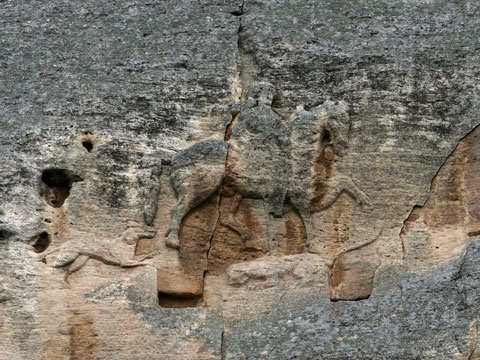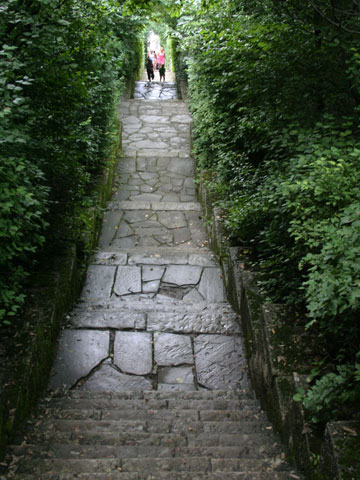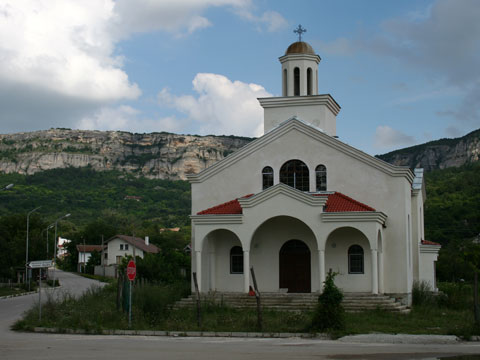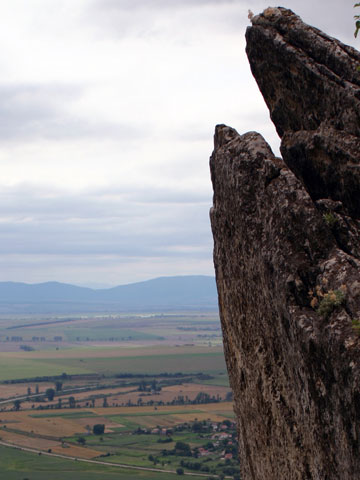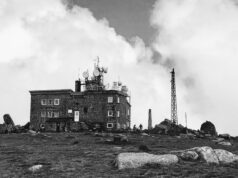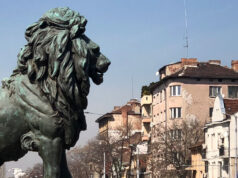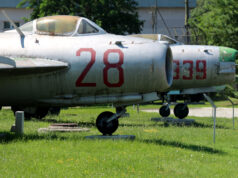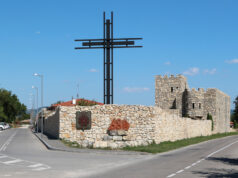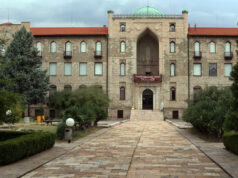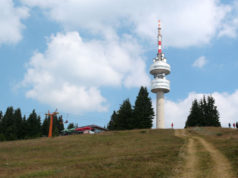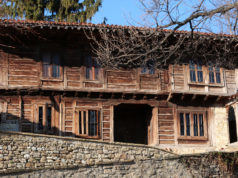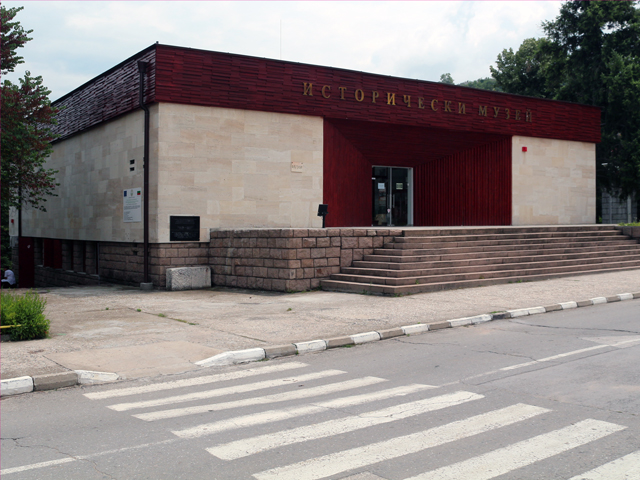The Madara Rider (or Madara Horseman, BG: Мадарски Конник) is a medieval carved rock relief of a horse and rider with a lion underfoot and a dog and eagle for companions. The rider is spearing the lion. The ensemble is monumental and strikes a triumphal pose. The life size carving, measuring 2.6 meters high by 3.1 meters wide, is carved 23 meters above the ground on the almost vertical face of a long, broad cliff 120 meters high. Three medieval inscriptions in Greek characters surround the relief.
Legends and Mystery Surround the Madara Rider
Legends abound concerning the origins of the relief. One story tells of a Latin king who, while hunting on the plateau, carelessly fell to his death. The carving was created by his relatives to immortalize his memory. Many among the local population, most of them Turkish, identified the carving as St. George, who is also revered by Muslims. That is probably why it survived the 14th century arrival of the Ottoman Turks.
Organized Research Explains Origins of the Madara Rider
During the 20th century the Bulgarian government sponsored numerous studies of the Madara rider and the inscriptions that surround it. Deciphering their contents has helped to identify the purpose of the relief and its significance for the medieval Bulgarian state, if not conclusively prove its age or provenance.
The earliest inscription, appearing to the right of the horseman, dates back to the reign of Khan Tervel at the beginning of the 8th century. It describes events during the year 705 in which Tervel helped restore Emperor Justinian II to the throne after he had been overthrown by a rebellion. This inscription is the first internal writing to mention the name “Bulgarians.” In addition, use of the term “uncles” to describe the settlers around Salonika supports the notion of a linear connection between the two groups.
The second inscription, to the left of the horseman, is linked to the name Krumesis, who reigned about 756. It refers to Bulgarian-Byzantine relations and the tribute Byzantium paid to the Bulgarians.
The third inscription, also to the right of the horseman, is from the reign of Khan Omurtag, who ruled 814-831. It is mostly unintelligible but seems to refer to treaties between Bulgaria and Byzantium.
The events described suggest the rider may have originated as a monument to honor Khan Tervel at the beginning of the 8th century. It is also possible that it could have been later and recalls his exploits among those of later rulers. The fact that it describes his first great act of service to the Byzantine Emperor without any mention of his later rescue of Constantinople from an Arab siege suggests that the carving was created to memorialize the earlier event and was carried out during his reign.
World Cultural Significance
The Madara Rider is a unique historical artifact bearing witness to the complicated relations between medieval Bulgaria and its Byzantine neighbor. It is the only monumental carved rock relief known from Medieval Europe. It was included in the UNESCO World Heritage List as a cultural monument of world significance in 1979.
Bulgarians have strong feelings about the Madara Rider. it appears on the obverse of all of the Bulgarian coins from 1 to 50 stotinki, and is the leading design for eventual use on a Bulgarian euro coin.
The Madara Historical and Archaeological Reserve
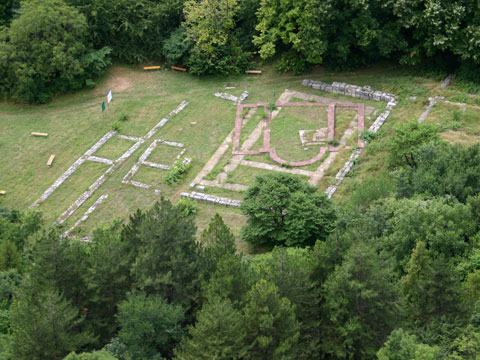 The region immediately surrounding the Madara Rider has a long history of cultural and religious significance and remains have been found from different eras. The whole area has been set apart as a historical and archaeological reserve by the government of Bulgaria.
The region immediately surrounding the Madara Rider has a long history of cultural and religious significance and remains have been found from different eras. The whole area has been set apart as a historical and archaeological reserve by the government of Bulgaria.
Abundant evidence of Thracian habitation on the plateau above the cliffs and on the ground around the base of the cliffs testify to a large Thracian community in the area from about the 4th century BCE onwards. The earliest Thracian shrine found at the site was discovered in a large cave south of the carving. It was dedicated to the three nymphs and has been dated to the 5th century BCE.
Another large sanctuary has been unearthed north of the carving that may have been dedicated to Tyche, the Greek goddess of fortune, who had a large cult presence in Moesia and Thrace. The temple was hewn into the rock and had a stepped entry. It has been dated to 1st-4th centuries CE.
The most impressive remains are of a Roman villa inhabited from the 2nd-5th centuries, which was probably the estate of a wealthy slave owner. Roman baths lie near the base of the cliffs.
During the 4th century, a fortress was built on the top of the cliff which remained until the Ottoman invasion 1000 years later.
After the Bulgarian conversion to Christianity a church was built in the fortress and one of the largest rock monasteries in Bulgaria was carved into the face of the cliff, including over 150 monastic cells and a rock church. Remains of a 9th century medieval monastery complex lie near the base of the cliff as well.
The Madara Rider is number 96 on the list of the top 100 national tourist sights in Bulgaria.


